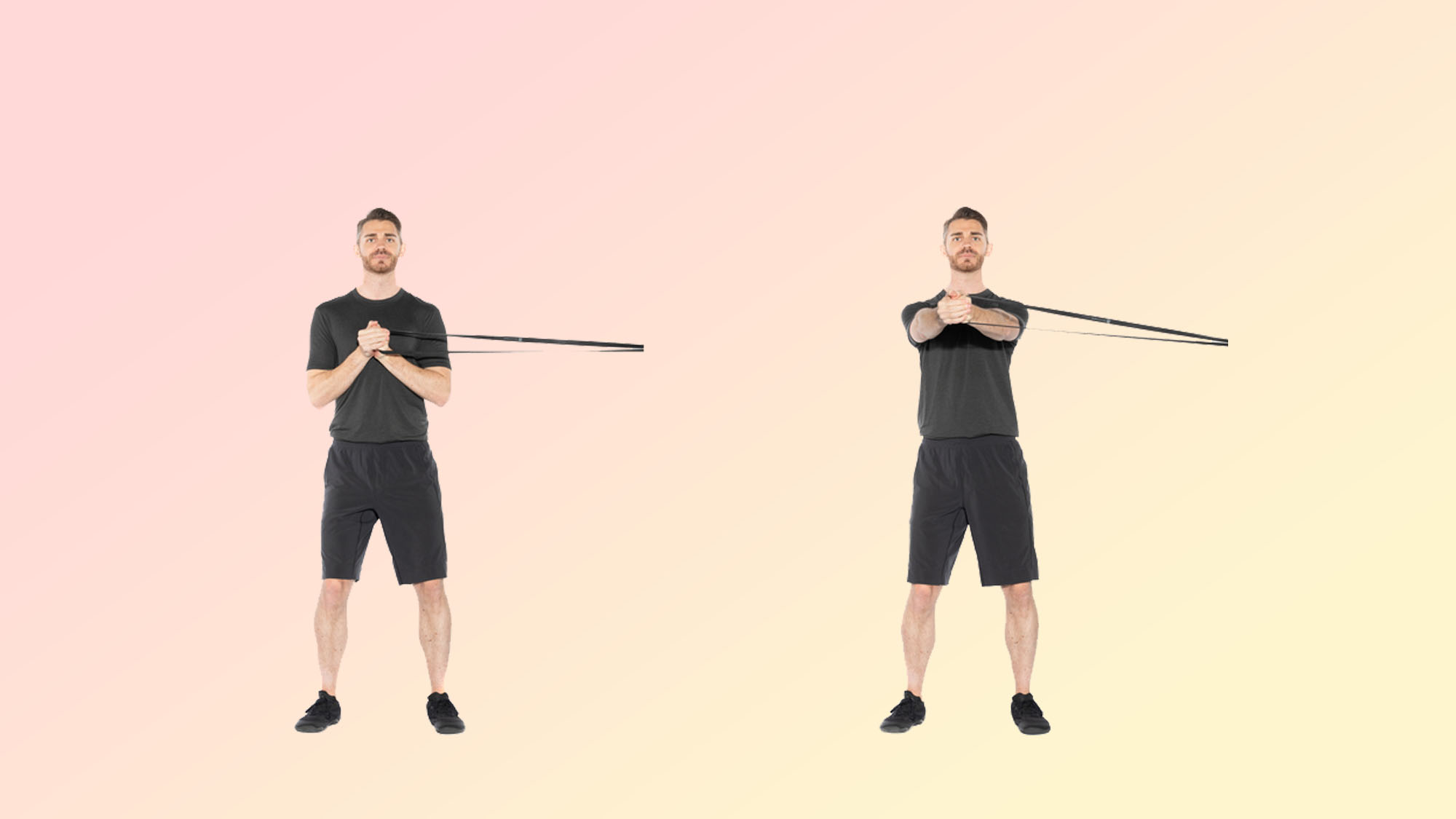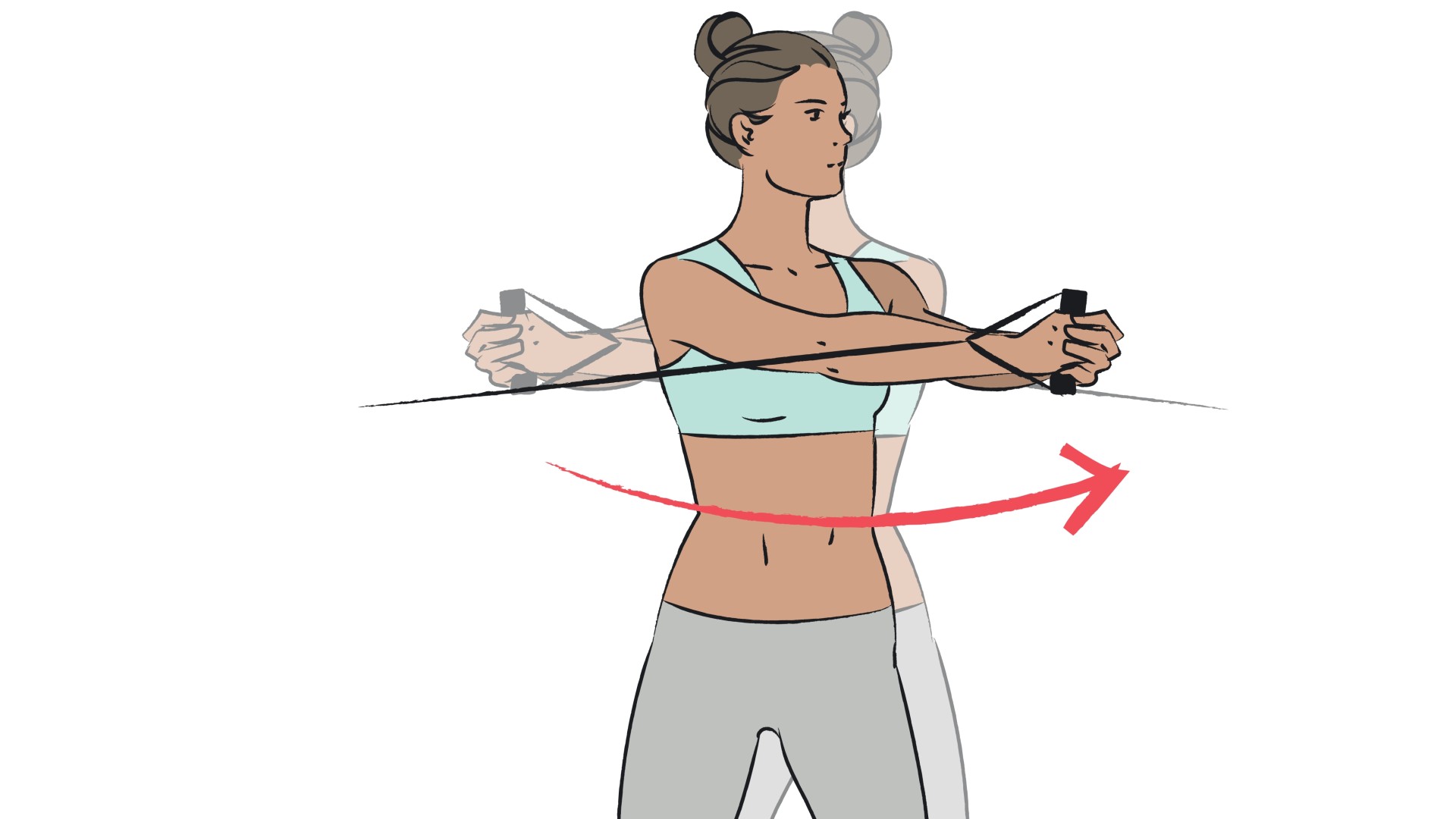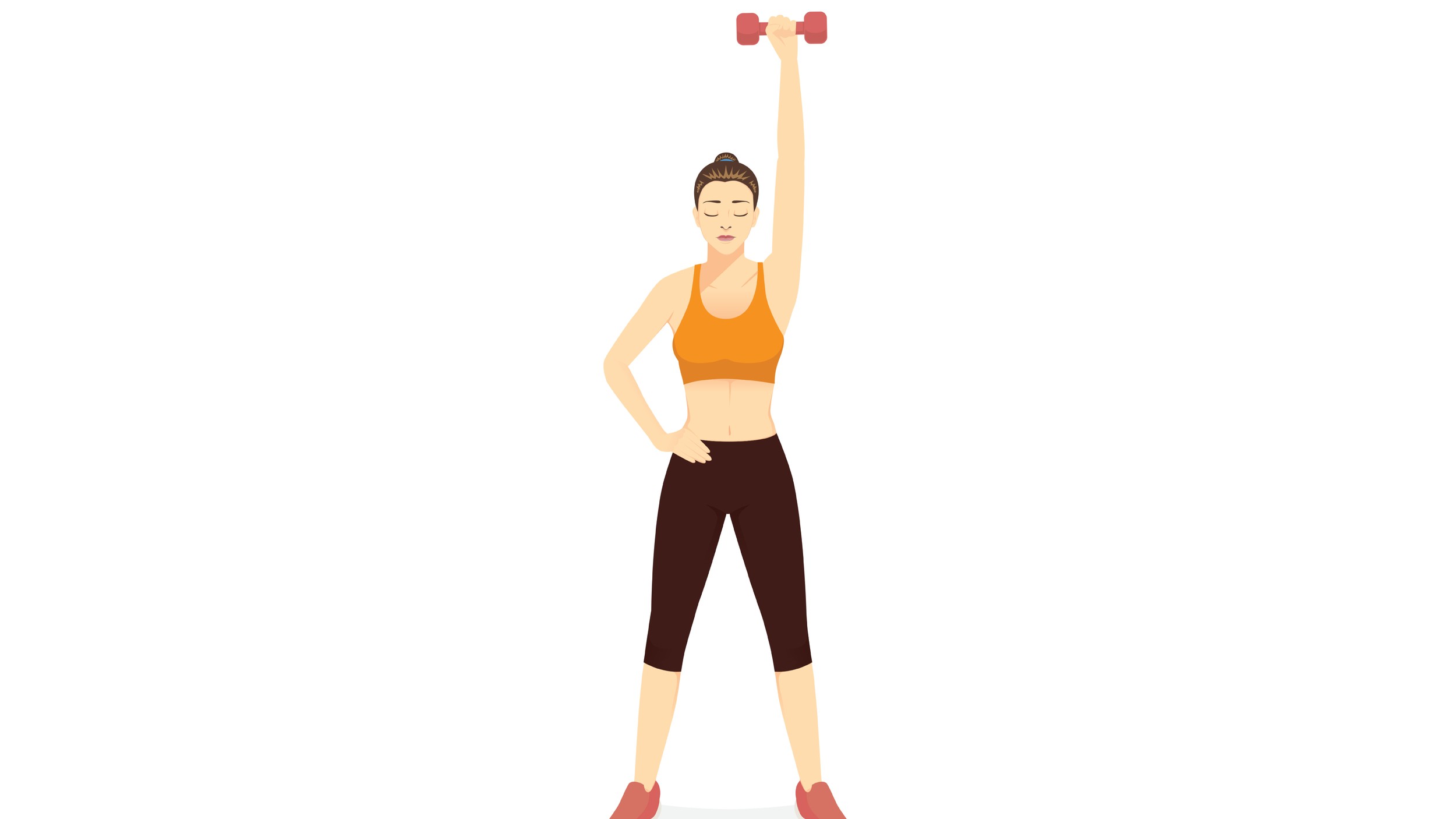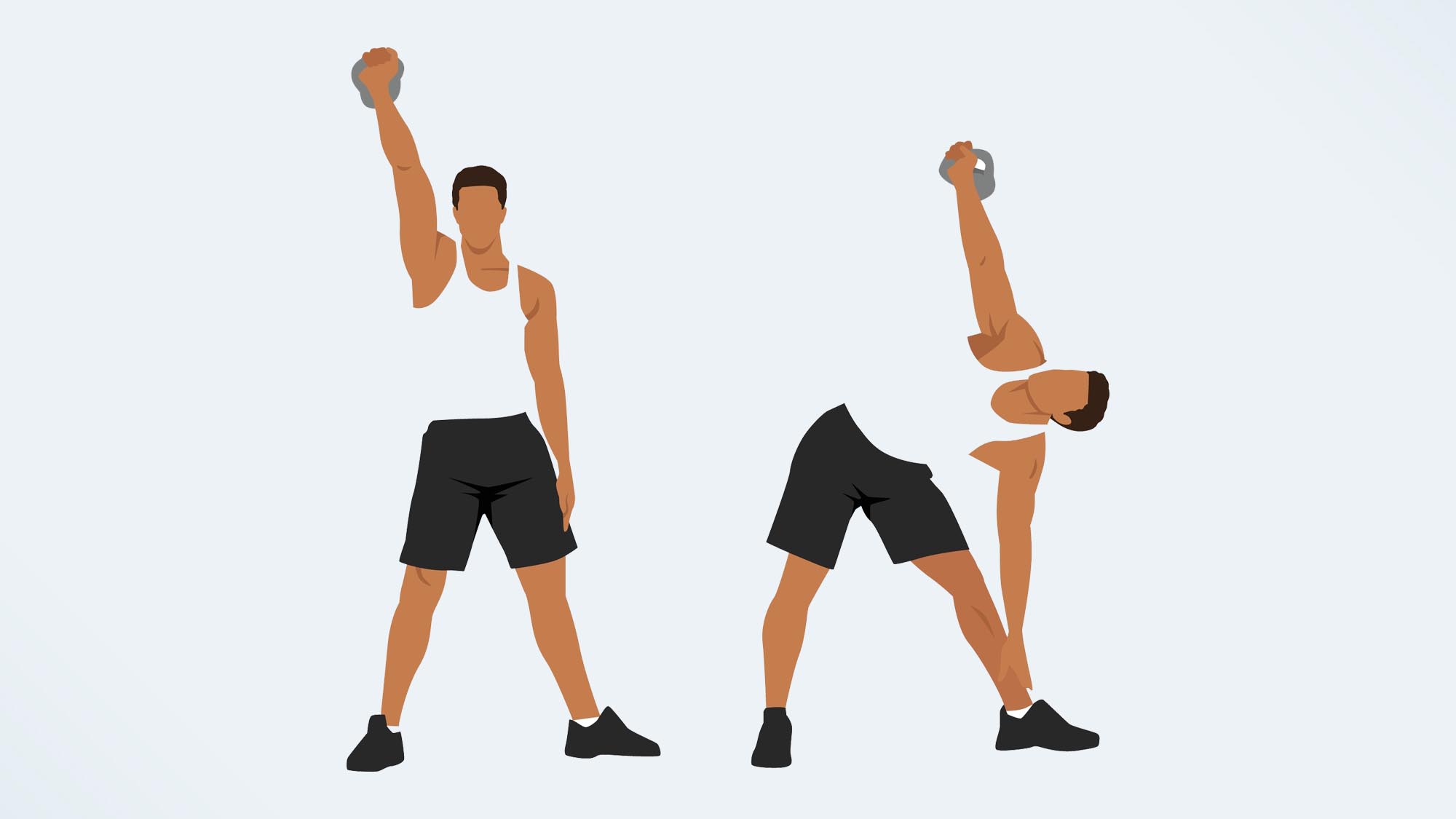
Want to strengthen your core without lying or sitting down? You’ve come to the right place. Stop with the sit-ups already and try building your deeper core muscles with these standing exercises.
Combined, they help boost balance and increase functional strength, keeping you strong and injury-resistant for years to come. And you’ll still be able to benefit from that satisfying ab burn without endlessly repping out the crunches or sit-ups.
Here are four beginner-friendly standing core exercises that will get your midsection trembling within minutes. You won't even need to roll out one of the best yoga mats for this, as everything is done on your feet.
4 standing exercises for deep core muscle
These are four of the best standing ab exercises for deep core muscle strength, and you need little equipment to try them from home. When you stand, your core muscles work to keep you stable and your torso upright, plus you need your deeper stabilizer muscles to help you move and exercise.
When we trainers talk about learning to engage your core, we don’t just mean bracing the abs; there’s a belt of deeper core muscles (the transverse abdominis) that sit beneath the abs and wrap around the torso; there are also muscles that hug the spine (multifidus and erector spinae) and ones that run along the pelvis (the hip flexors) and attach at the hips.
Your diaphragm and glutes even count as core muscles. Together, they provide protection and support for your body (read: abs vs core muscles).
Strengthening the deep core muscles is called functional training; this will make your daily activities easier, not just your workouts. Standing core exercises can help you target these muscle groups, so they’re well worth adding to your ab workout routine from now on.
Get instant access to breaking news, the hottest reviews, great deals and helpful tips.
1. Pallof press

Coined by the physical therapist John Pallof, this anti-rotation exercise challenges your entire core to resist movement and maintain stability while working with a load. By training your core muscles to resist rotation, you can withstand impact and perform twisting movements better, which is ideal if you play sports like tennis.
For this move, you just need one of the best resistance bands and an anchor point you can tie it to, like a squat rack. Secure your band at chest height, then stand to the side and extend the band out in front of you to create tension.
Without rotating toward the anchor point, practice pressing the band out, then bending the elbows and bringing the band to your chest. Practice 3-4 sets of 8-12 reps.
2. Bear hug standing Russian twists

Keeping the weight close to your body and squeezing the weight will increase upper-body activation without straining your lower back; a kettlebell usually works best for this.
Stand with your feet roughly shoulder-width apart and, while hugging the weight, focus on rotating from left to right, allowing your gaze to follow. Keep a soft bend in the knees and keep your core engaged so that you feel your waist muscles (the obliques) switching on. Complete 3-4 sets of 20 reps (10 per side).
If you choose to extend your arms, I recommend using a band (pictured above) that you can rotate side to side with.
3. Overhead farmer's walk

The overhead farmer’s walk (or offset farmer's walk) builds strong and stable shoulders, but it’s actually a full-body exercise and demanding on your core.
This move builds strong obliques using unilateral movement to develop coordination and balance. You’ll need to maintain a strong torso to prevent leaning forward, backward, or sideways, switching on your waist and testing torso stability.
Press a weight (I recommend a dumbbell) overhead and keep your arm close to your ear, then begin walking. You could walk for a set distance or time cap, depending on the workout. Remember to switch arms and control the weight, rather than the weight controlling you.
- How to do the offset farmer's walk
4. Windmills

Windmills are tricky, so I recommend using a light dumbbell or kettlebell and building slowly. You’ll start with your legs wide and toes pointed slightly outward, then punch your weight overhead using your left arm. From here, practice hinging sideways at the hip and sliding your right hand down your right leg while keeping the weight punched overhead in your left hand.
Send your gaze up to your top hand as you move. Once you reach your ankle, pause, then use your core to drive up to stand. Complete 6-8 reps on one side, then switch, aiming for 3-4 sets.
This sideways hinge hits the obliques and requires upper body and shoulder stability to keep the weight in position. It’s a great spinal and hip activator and also stretches the inner thighs and hamstrings.

Follow Tom's Guide on Google News and add us as a preferred source to get our up-to-date news, analysis, and reviews in your feeds.
More from Tom's Guide
- I'm a personal trainer — this one-minute stretch opens your shoulders and builds upper body flexibility
- You just need 3 moves and 25 minutes to build your back, biceps and shoulders with a set of dumbbells
- I walk 5 miles every day without leaving the house — here’s how I do it

Sam Hopes is a level 3 qualified trainer, a level 2 Reiki practitioner and fitness editor at Tom's Guide. She is also currently undertaking her Yoga For Athletes training course.
Sam has written for various fitness brands and websites over the years and has experience across brands at Future, such as Live Science, Fit&Well, Coach, and T3.
Having coached at fitness studios like F45 and Virgin Active and personal trained, Sam now primarily teaches outdoor bootcamps, bodyweight, calisthenics and kettlebells.
She also coaches mobility and flexibility classes several times a week and believes that true strength comes from a holistic approach to training your body.
Sam has completed two mixed doubles Hyrox competitions in London and the Netherlands and finished her first doubles attempt in 1:11.
You must confirm your public display name before commenting
Please logout and then login again, you will then be prompted to enter your display name.
